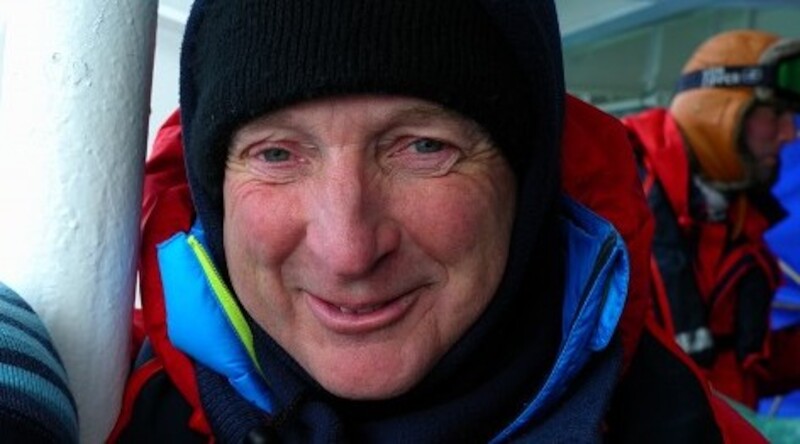By Ian Purkis
Many of our fellow Shackleton Centenary Voyage travellers had at least one very personal good reason for joining the “Akademik Sergey Vavilov”; we had three very minor reasons.
The first goes back to my early childhood. As a boy, I would often stay with my grandmother. Over the bed I always slept in hung a print of “Oates Leaving the Tent”, the famous picture that became one of the enduring images of Scott’s last expedition. I vaguely remember asking “Why is that man in the snow?” as so I first heard the Captain Scott story and of Oates’ bravery. I also vaguely recall my grandmother telling me that my grandfather, who had died years earlier, had known one of the men who had been to Antarctica with Scott. By the time I was nine or ten, I had read my father’s 1930s edition of “South” and more and was hooked. So started my lifelong interest in Antarctica, the Heroic Age and small boat sailing.
Many years later, while visiting my uncle, I asked what happened to the Oates picture from his mother’s home. “Oh, it’s in the loft, do you want it?” My somewhat surprised reply….. “Well, don’t you?” Days later it was hanging in ours! Another couple of years on and during a particularly good dinner party, conversation turned to Antarctica and Scott. To give one guest a closer look, I took the picture off the wall and handed it to him. ”Do you realise the back is removable?” I hadn’t noticed and moments later it was off and to my utter astonishment two documents fell out. As I started to read them, I felt a strong tingling down my spine. One was a handwritten letter, dated 1918, from Tom Crean to my grandfather, Capt R H Dodds, the other was a typed summary of his time with Scott, also mentioning he’d been with Sir Ernest Shackleton on the “Endurance” Expedition, both signed by Tom. The letter thanked Capt Dodds for writing to Guinness and goes on to tell of his time with Oates, first as his tent-mate, then of his bravery on leaving the tent.

Reason number two is that my other grandfather was a real “Cape Horner”. He had joined the Windjammer “Ladye Doris” in 1906 as an apprentice and celebrated his seventeenth birthday shortly before his first rounding of the Horn under sail. Sadly he was lost at sea while my father was still a child and the family know very little of his life. It’s amazing what you can learn in the “Caird Library” at the National Maritime Museum in Greenwich. Thanks to help from their staff, Edward (my son) and I have been able to copy another apprentice’s handwritten log of the “Ladye Doris” in which my grandfather’s antics feature frequently!
Reason number three is more recent. For the last 30 years I’ve been employed by JELD-WEN UK Ltd and its predecessor UK companies “John Carr” and “Boulton & Paul”, latterly, until October last year, as Technical Director. B&P has an amazing history that includes manufacturing the huts used by Capt Scott, and in 1943, by the Royal Navy, all taken to Antarctica as “flat-pack” kits. The UK Antarctic Heritage Trust had approached the Company seeking help with restoration of Bransfield House at Port Lockroy. Word in the Company was that I knew something about Antarctica, so I got the job! Over the next few years JELD-WEN sponsored booklets and then donated faithful replicas of the original windows. The UKAHT replied with some great photos of penguins standing bemused, watching humans fitting new windows into the building! Another year or so on and the Company further supported the rebuilding of the wartime Nissen Hut, now a cunningly disguised high performance building providing volunteers’ accommodation, featuring JELD-WEN triple glazed timber windows, highly insulated external doors and “Fireguard” slim internal fire doors. This story and the “thank you” from the UKAHT to this day proudly features on the JELD-WEN UK website, in CPD presentations and, one particular pleasure, as the screen saver on at least one colleague’s computer!
So why did I retire as Technical Director? To join the Shackleton Centenary Voyage organised by Ice Tracks Expeditions with Margaret, my long suffering wife who’s had to endure more than her fair share of Antarctica over the years! Special thanks to SPRI and particularly to Margaret for making it possible.

